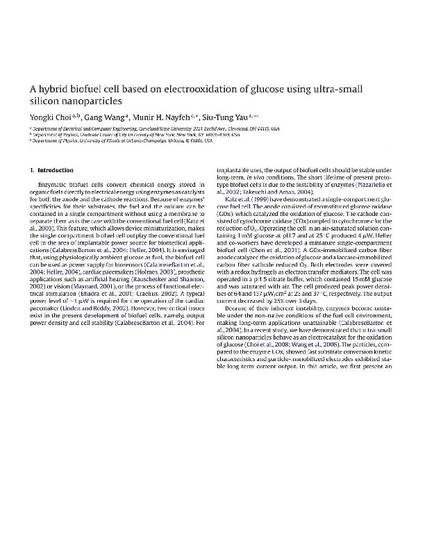
The ultra-small silicon nanoparticle was shown to be an electrocatalyst for the electrooxidation of glucose. The oxidation appeared to be a first order reaction which involves the transfer of 1 electron. The oxidation potential showed a low onset of −0.4V vs. Ag/AgCl (−0.62V vs. RHE). The particle was used as the anode catalyst of a prototype hybrid biofuel cell, which operated on glucose and hydrogen peroxide. The output power of the hybrid cell showed a dependence on the enzymes used as the cathode catalyst. The power density was optimized to 3.7μW/cm2 when horseradish peroxidase was replaced by microperoxidase-11 (MP-11). Comparing the output power of the hybrid cell to that of a biofuel cell indicates enhanced cell performance due to the fast reaction kinetics of the particle. The long-term stability of the hybrid cell was characterized by monitoring the cell voltage for 5 days. It appeared to that the robustness of the silicon particle resulted in more cell stability compared to the long-term performance of a biofuel cell.
